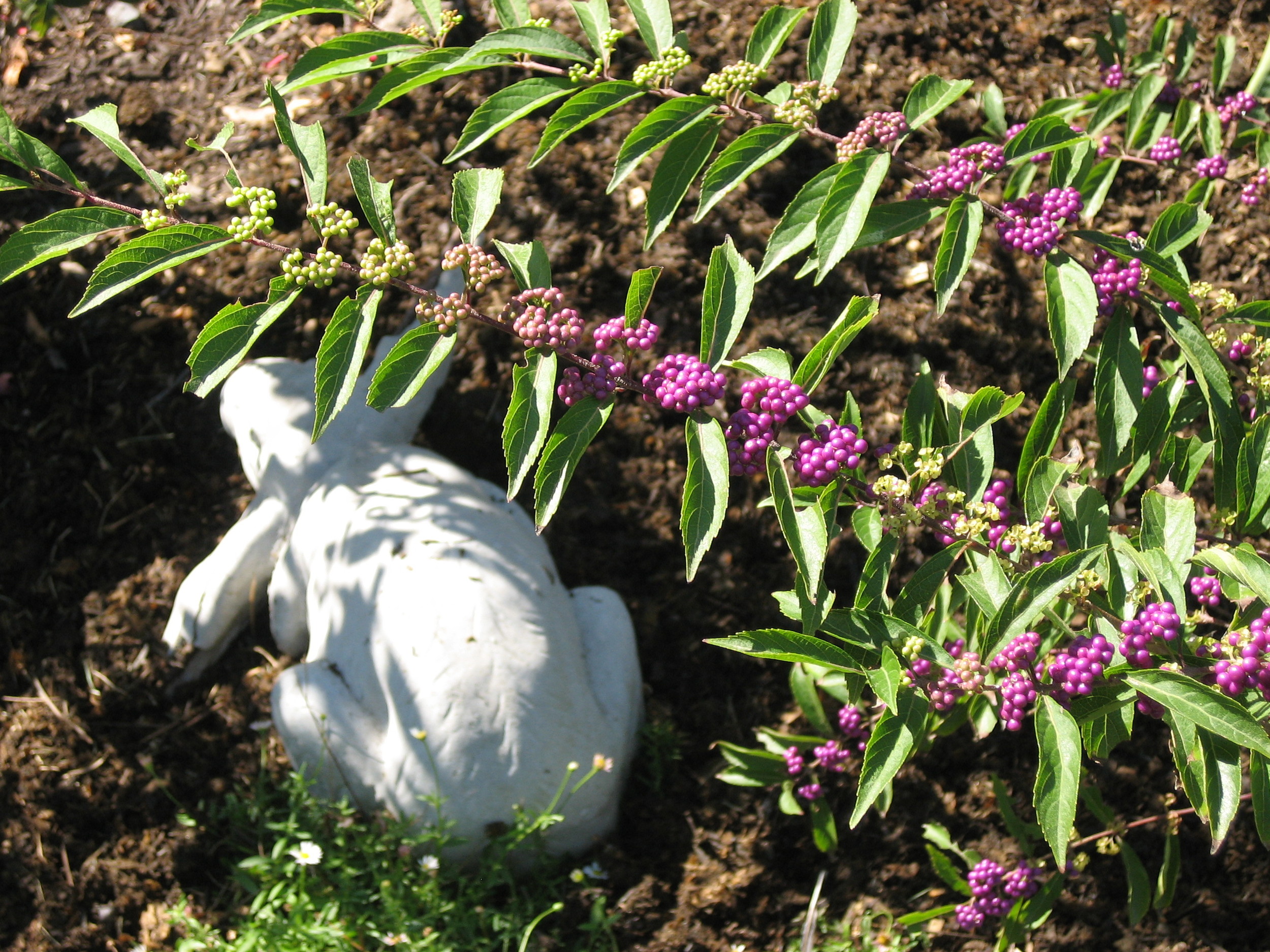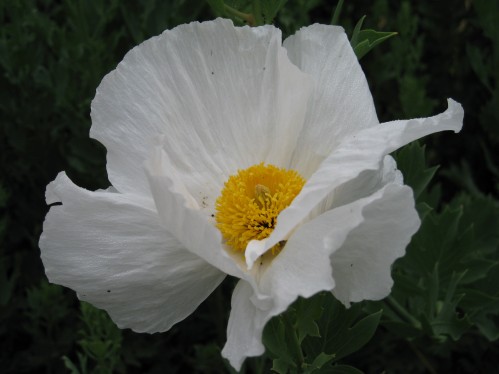 One of my favorite shrubs is the perennial garden beauty, Matilija Poppy, Romneya coulteri. It blooms in May and seems to "smile sunshine" with its huge whimsical "fried egg-like" flowers sitting atop gray-green lobed foliage. It is wise to have ample room for Matilija Poppy in your garden as it can reach 6-8' tall, and spread easily if unchecked by rhizomes over a large area. When it blooms in my garden, I'm reminded it is late spring and the onset of summer is fast approaching.
One of my favorite shrubs is the perennial garden beauty, Matilija Poppy, Romneya coulteri. It blooms in May and seems to "smile sunshine" with its huge whimsical "fried egg-like" flowers sitting atop gray-green lobed foliage. It is wise to have ample room for Matilija Poppy in your garden as it can reach 6-8' tall, and spread easily if unchecked by rhizomes over a large area. When it blooms in my garden, I'm reminded it is late spring and the onset of summer is fast approaching.
The Matilija Poppy is native to coastal ranges and valleys of Southern California and into Baja California. It likes full sun and survives on scant to moderate watering. This shrub can tolerate many types of soils. The Matilija Poppy thrives in zones 4-12, 14-24. Matilija Poppies are simple maintenance, needing a pruning close to the ground in late summer to early fall, and restraint from summer watering to keep its growth curbed. Slowly they begin to grow through the fall and winter, and suddenly in May, burst into bloom with their gigantic flowers.
Best places to plant your Matilija Poppy in your garden or property is as a structure and backdrop shrub, along a fence line, along roadsides, and when planting a large border or natural area. Ironically, it is a little tricky to start them initially in your garden, but once established they easily can take over. In fact, it took me three times, before I successfully established my Matilija Poppies. Start your Matilija Poppy from 1 gallon size plants from your local nursery, or from rooted suckers on spreading roots from a friend's garden. If you have Matilija Poppies growing in your garden, you will gladly want to share them with your friends.
Matilija Poppy's flowers are big, bold, and full of character in your garden. Matilija Poppies can be used as as a cut flower, too. As a cut flower, be aware that it has a tendency to drop dust from its golden stamens and an occasional white petal.
Please share if you are familiar with the Matilija Poppy. If you grow them in your garden, please share how you curb their enthusiastic runners.
VintageGardenGal Tidbit Thyme....
Remember to send in a photo of your chicken coop this month to, bonnie@vintagegardengal.com. Submit your winning chicken coop photo this month, May 2010, and be a part of VintageGardenGal's premier backyard "Chicken Coop Photo Contest." Winners will be announced in June 2010, and their photos shared on VintageGardenGal.

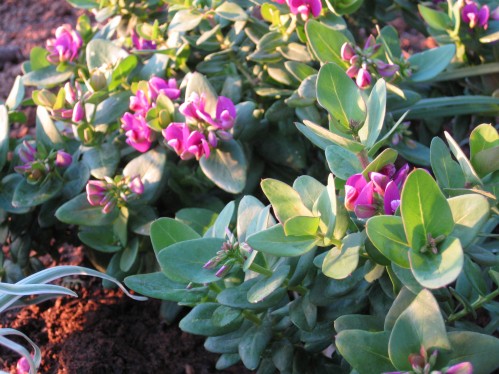
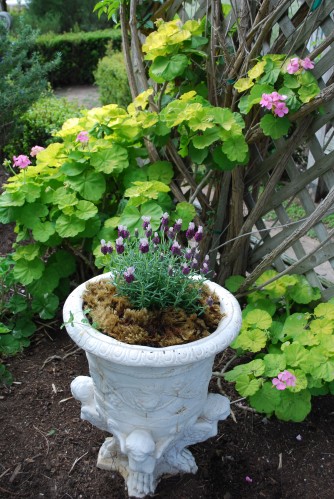
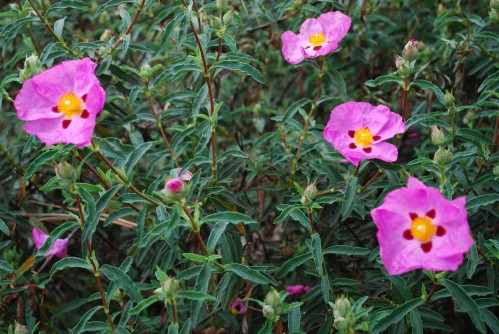 This is another spring blooming delight, Orchid Rockrose, Cistus x purpureus. Although this is a native Mediterranean drought tolerant shrub, something about it reminds me of an English country garden.
This is another spring blooming delight, Orchid Rockrose, Cistus x purpureus. Although this is a native Mediterranean drought tolerant shrub, something about it reminds me of an English country garden. 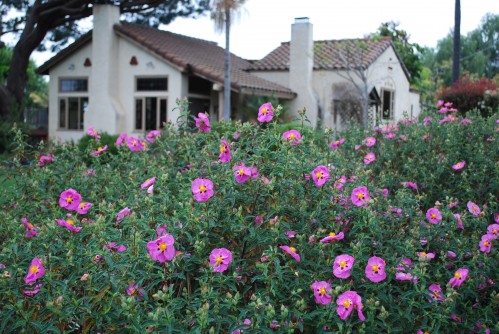
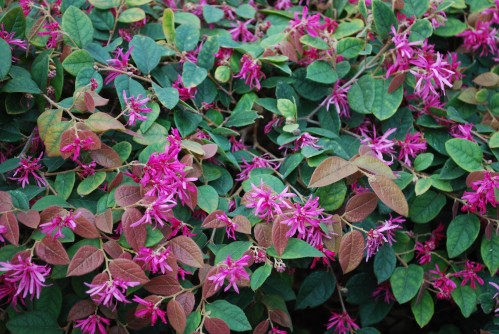
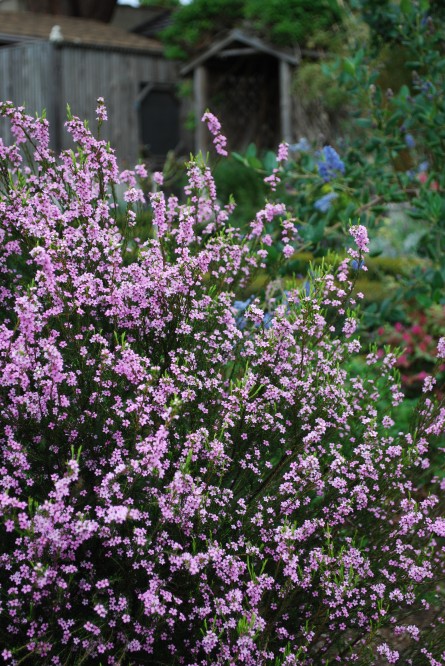 How can you not love a plant called "Pink Breath of Heaven". This shrub originally from South Africa, explodes into bloom winter to spring, with showy pink delicate tiny flowers on wispy feather-like branches. I feel like it is my own personal "trumpeter" in the garden, announcing the beginning of spring.
How can you not love a plant called "Pink Breath of Heaven". This shrub originally from South Africa, explodes into bloom winter to spring, with showy pink delicate tiny flowers on wispy feather-like branches. I feel like it is my own personal "trumpeter" in the garden, announcing the beginning of spring.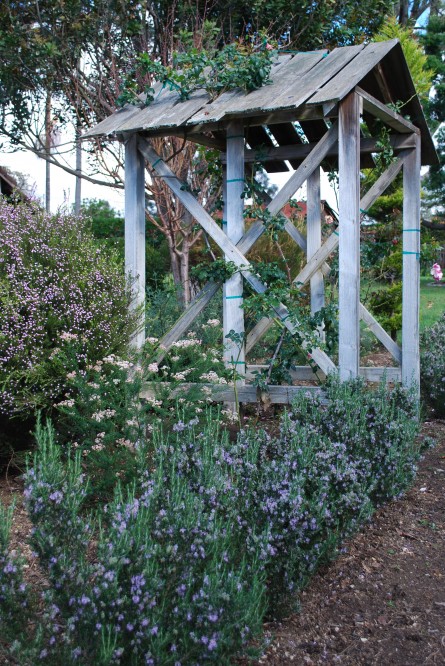 Let me introduce you to the "Majorca Pink" rosemary, Rosmarinus officinalis, "Majorca Pink", planted along the front edge of the arbor in the photo above . It is an upright rosemary which can grow 2-4 feet high, and 1-2 feet wide. It has pretty pink lilac flowers, with a hint of fragrance. Its flowers attract bees, birds, and butterflies. It blooms in the winter time here in Southern California, in my Mediterranean climate. Its flowers are edible, and can be used as a garnish. Its dark green, glossy, aromatic leaves are a great culinary herb.
Let me introduce you to the "Majorca Pink" rosemary, Rosmarinus officinalis, "Majorca Pink", planted along the front edge of the arbor in the photo above . It is an upright rosemary which can grow 2-4 feet high, and 1-2 feet wide. It has pretty pink lilac flowers, with a hint of fragrance. Its flowers attract bees, birds, and butterflies. It blooms in the winter time here in Southern California, in my Mediterranean climate. Its flowers are edible, and can be used as a garnish. Its dark green, glossy, aromatic leaves are a great culinary herb.